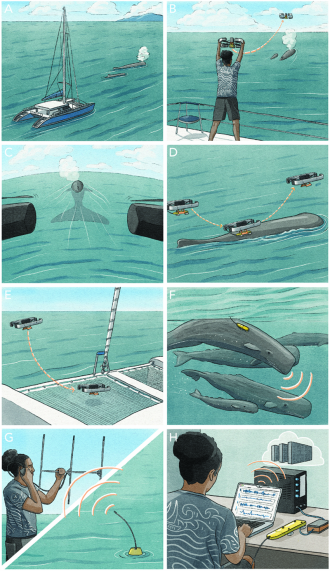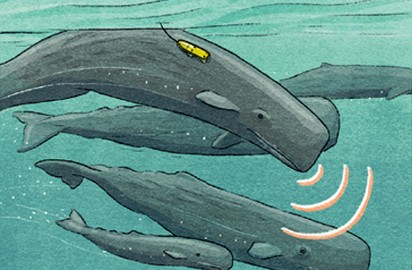Multimedia

Tagging method overview (illustration)

Tagging method overview. A: Looking for whales. B: Launching the drone from the boat. C: Aligning the drone behind the whale prior to tag deployment. D: Tag deployment on the whale via “tap-and-go”. E: Drone return on the boat. F: Data recording on the whale. G: Tag retrieval. H: Data offload and tag reconditioning for the next deployment.
- File size: 2.1 MB
- Attribution: Vogt et al., 2025, PLOS One, CC-BY 4.0 (https://creativecommons.org/licenses/by/4.0/)
- Permission category: Free to share or modify (must credit)
- Last modified: 14 Aug 2025 4:09am
- NOTE: High resolution files can only be downloaded here by registered journalists who are logged in.
In-field deployment.
- Attribution: Vogt et al., 2025, PLOS One, CC-BY 4.0 (https://creativecommons.org/licenses/by/4.0/)
- Permission category: Free to share or modify (must credit)
- Last modified: 07 Aug 2025 11:23am
- NOTE: High resolution files can only be downloaded here by registered journalists who are logged in.
Attachments
Note: Not all attachments are visible to the general public. Research URLs will go live after the embargo ends.

Journal/
conference: PLOS One
conference: PLOS One
Research:Paper
Organisation/s:
Harvard University, USA
Funder:
This study was financially supported by Project CETI (https://www.projectceti.org) via Dalio Philanthropies (https://www.daliophilanthropies.org), OceanX (https://oceanx.org), Sea Grape Foundation (http://www.seagrapefoundation.org), Virgin Unite (https://unite.virgin.com) and Rosamund Zander/Hansjorg Wyss in the form of grants received by DFG, SG and RW through The Audacious Project: a collaborative funding initiative housed at TED (https://www.audaciousproject.org). This study was also financially supported by the National Geographic Society (https://www.nationalgeographic.org/society) in the form of a grant (NGS-72337T-20) received by DFG, SG and RW. The funders had no role in study design, data collection and analysis, decision to publish, or preparation of the manuscript.



 International
International


